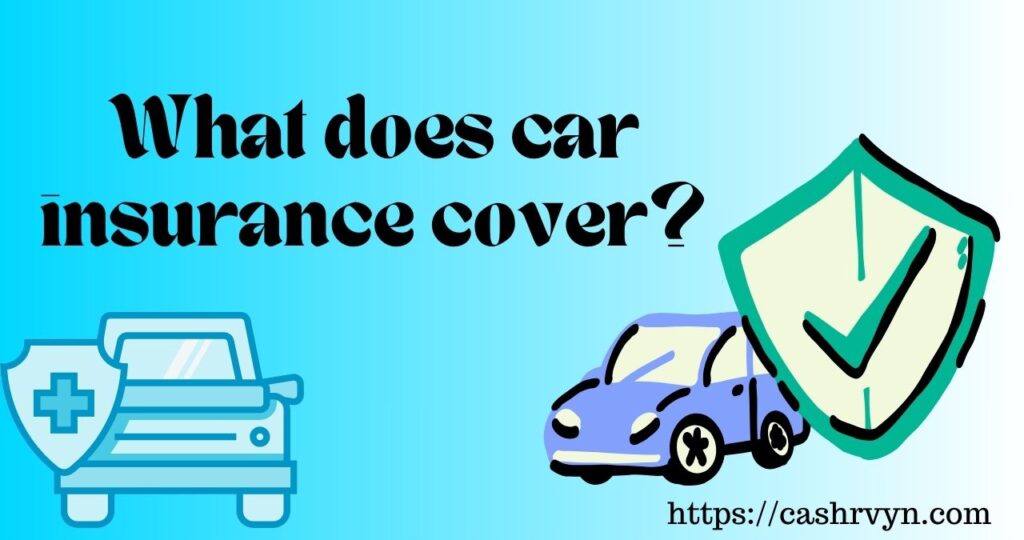It’s important to get an automobile that meets both your wants and your budget. However, you’ll also need to decide whether to insurance your automobile in order to safeguard your family’s safety in the event of an accident.

There are several sorts of auto insurance coverage to take into account, giving you the opportunity to choose a highly customized policy—but it shouldn’t be complicated. Knowing the fundamental components of typical plans can help you protect yourself from unforeseen expenditures related to auto accidents while making sure you comply with your state’s and your lender’s minimum coverage requirements.
How does car insurance work?
Auto insurance serves as a barrier between you and any monetary losses that result from an accident or other occurrences beyond of your control. Drivers pay an insurance provider a certain sum of money, known as a premium, and in exchange, the insurer promises to cover any possible damages covered by your policy.
However, the sort of auto insurance you choose will determine which claims are covered. Nearly all states mandate some kinds of coverage, such as bodily injury and damage to property coverage, while some are optional. If a driver requires more insurance than what their state mandates, they may pay for it.
Types of car insurance coverage and what they cover
Liability, collision, and broad coverage are examples of common forms of coverage that provide protection against theft, accidents, and damage. Uninsured or underinsured vehicle insurance protects you against drivers who have little or no insurance, and is mandated in certain jurisdictions for drivers.
Here is a summary of several popular automobile insurance policies and the coverage they provide. (We’ll get into the particulars in the following sections.)
Liability coverage
What it is: If you are determined to be at fault for an accident, liability coverage may assist shield you from the cost of potential medical expenses and property damage. Nearly all American states mandate that drivers have a minimum amount of liability insurance.
What it covers: If you cause an accident, liability insurance compensates for both physical injuries and property losses.
Bodily injuries (BI): If you cause an accident, BI will help cover any affected parties’ medical costs, including hospital stays and prescriptions. If someone hurt in the accident decides to sue you for their suffering and pain, BI could also help you out with the cost of your legal representation.
Property damages (PD): If you cause an accident and cause someone else’s property to be damaged, PD may help you pay for the necessary repairs. For instance, PD could pay for the damage to a neighbourhood welcome sign if you struck it while driving. It’s crucial to remember that PD often does not cover injuries to your own car.
Coverage limits: Your insurance policy’s coverage limit and the bare minimum required by the state where you live determine the most that your insurer will pay. Each of the three numbers that make up the liability insurance limit indicates the most that your insurance provider will be ready to pay for any damages or injuries that result from an accident.
For instance, your auto insurance company could provide you with a liability coverage option with a “30/50/10” maximum. This indicates that your insurance will cover up to $30,000 in per-person physical injuries, $50,000 in total accident-related injuries, and $10,000 in accident-related property losses.
Comprehensive coverage
What it is: broad coverage protects you from non-collision damage and is an optional plan.
What it addresses: Your vehicle’s comprehensive insurance covers harm brought on by the following:
- Stealing Vandalism
- Animal contact Fire Explosions
- dropping trees
- debris from vehicles
- Hail, floods, lightning, and earthquakes are examples of storms.
Coverage limits: Your insurer will only pay for repairs up to a certain amount, which is often the vehicle’s actual cash worth minus depreciation and deductibles.
Collision coverage
What it is: Collision insurance pays for damage to your automobile if you collide with another car or anything else. If you have an unpaid auto loan, your lender will usually demand it; but, if your car is completely paid off, it may not be necessary.
What it addresses: When one of the following occurs, collision insurance covers for any required auto repairs for your vehicle:
insurance’s vital to keep in mind that collision protection only pays for the expenses of repairing and replacing your own car; insurance does not pay for damage to other vehicles.
- yet another car
- If your vehicle flips over or crashes, a single-car
- a thing, like a tree or a road sign
Limits on coverage: Your insurance will only pay for certain types of repairs, often up to the actual cash worth of your automobile minus depreciation and deductibles.
Gap insurance
What it is: If your automobile is damaged or wrecked in an accident, gap insurance, an optional policy, will pay the difference between the car’s current value and the balance of your auto loan.
What it covers: A normal insurance policy would only cover the current value of your automobile if it were stolen, wrecked, or damaged. Gap insurance helps pay the difference between your auto loan balance and the value of your automobile, preventing you from being stuck with a debt for a vehicle you are unable to use. Usually, a new car’s original loan holder is the only one who may get this coverage.
For instance, suppose you bought a car two years ago and had a $20,000 loan balance. Your car’s true value has dropped to $17,000 since the day you acquired it. If your automobile is stolen, a standard auto insurance coverage would only pay you $17,000 of the current value, leaving you responsible for the remaining $3,000. You won’t owe anything on your auto loan any longer since the last $3,000 will be covered by a gap insurance policy.
Coverage limits: Your insurer’s maximum gap insurance coverage limit may be expressed as a fixed monetary amount or as a percentage of the current value of your automobile, and it may be subject to a deductible.
For instance, suppose your automobile is wrecked after you spent $30,000 on a new one but still owing $25,000 on it. The current value, let’s say $23,000, is covered by your motor insurance coverage. You would be responsible for the $2,000 difference without gap insurance. The gap coverage, however, may help you cover the $2,000 minus any deductibles if you have it.
New car replacement
What it is: The moment you drive a brand-new automobile off the lot, it may begin to lose value. In order to cover the expense of buying a new automobile with the same make and model as your present vehicle if it is wrecked, new car replacement insurance is available. It is an optional coverage that is normally only offered for newer vehicles with low mileage.
What it covers: The cost of replacing your present vehicle with a new one is covered. Consider the scenario where you just purchased a brand-new automobile and it is wrecked as you drive away from the dealership. The insurance provider could only reimburse you for the car’s diminished current worth if you don’t get a new one. However, if you have it, your insurance could pay you enough, minus any deductibles, to cover the exact same brand and model.
Limitations on coverage: This policy may include age or mileage restrictions. For instance, an insurance provider could stipulate that your car must be under two years old and have less than 24,000 miles on it in order to be eligible for coverage.
The takeaway
Drivers must have property damage and personal injury liability insurance in almost every state in the U.S. Depending on the state you live in, additional insurance policies like PIP and uninsured/underinsured motorist coverage can be necessary. To qualify for financing, your vehicle lender may also have particular coverage requirements.
Consider your state’s and your lender’s requirements, the age and worth of your automobile, and your existing health insurance policy to fill in any coverage gaps when choosing the insurance that’s best for you and your car.







